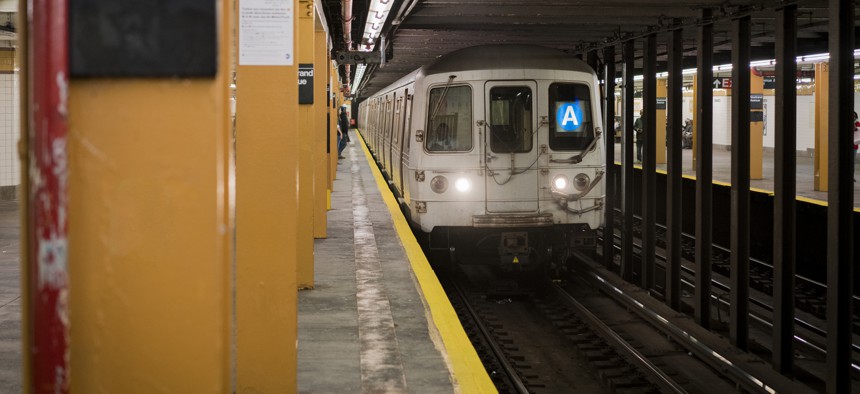Farebox Shortfalls Soon to Create ‘Sizable' Transit Budget Gaps

Sinisa Kukicvia via Getty Images
The problem is looming for big city transit agencies in places like New York and San Francisco, with ridership unlikely to recover before federal pandemic aid dries up, Fitch Ratings warns.
Some of the country’s busiest transit systems will face big budget pressures in the coming years, because their post-pandemic ridership is not likely to recover before federal stimulus funds run out, a major bond ratings agency warned this week.
Fitch Ratings, one of the three dominant ratings companies, said in a report released Wednesday that transit agencies that relied the most on fare revenues—rather than local sales taxes or other income streams—are “expected to face sizable budget gaps” when the federal aid dries up, Fitch analysts warned.
“Transit agencies and governments have the tools to adjust to volume declines. However, the usual tweaks to spending, service levels and fares will not be enough for the nation’s most economically important urban transit agencies, which rely heavily on fares,” they wrote in their report.
Among the agencies with the steepest hills to climb are New York’s Metropolitan Transportation Authority and the Bay Area Rapid Transit service in the San Francisco area. Those agencies “depend on extraordinary federal funding to compensate for lost fare revenue to maintain service levels,” the Fitch analysts wrote.
In the first two years of the pandemic, Congress approved nearly $70 billion to help transit agencies weather the shock of the pandemic. Ridership on many systems plummeted. In most cases, the drop-off was more severe for rail service than for bus ridership, as white-collar commuters worked from home while lower-income service workers reported to work on site.
But the growth of remote working spells bad news for the bottom lines of many transit agencies, Fitch warned. The shift to telework comes as transit agencies face competition from ride-hailing apps, bike-sharing services and, of course, personal vehicles. The number of cars owned per household has grown steadily in the United States over the last decade.
Transit agencies that depend heavily on fare revenue predict they will only recover 70% to 90% of their pre-pandemic ridership, the analysts noted, but several agencies are lagging behind their own estimates.
Federal aid should be enough to cover deficits for New York and the Washington, D.C., transit system through 2024, and BART until 2025, according to Fitch.
Fitch said the agencies had a negative financial outlook because of “execution risks associated with rebalancing budgets in a fundamentally changed demand environment.”
“Fitch is likely to downgrade the ratings if the agencies do not demonstrate progress toward rebalancing well ahead of the depletion of federal aid,” the analysts added.
That said, the analysts also warned that service cuts alone would not be a politically palatable way to improve the bottom line. Agencies tend to cut underperforming bus routes first, but those tend to serve low-income populations.
“The scale of budget reductions currently needed may outstrip the practical ability of the hardest hit to adjust spending,” the Fitch analysts wrote.
Other options include hiking fares, finding new revenues or reconfiguring routes to generate more ridership.
On the other hand, agencies such as Los Angeles County Metropolitan Transportation Authority (LA Metro) and Sound Transit in the Seattle area, which depend more on tax revenue have “experienced steady revenue growth, even with declines in ridership,” as sales tax revenues increased, the Fitch analysts wrote.
LA Metro’s tax revenues actually grew 9% between 2020 and 2021. Federal aid added even more cushion, accounting for nearly a fifth of the agency’s 2021 revenue, according to Fitch.
Last year’s Infrastructure Investment and Jobs Act included $39.15 billion for public transit, but that money is dedicated to help with improving infrastructure, not covering agencies’ day-to-day costs.
Daniel C. Vock is a senior reporter for Route Fifty based in Washington, D.C.
NEXT STORY: Two States to Seek Nearly $900M in Federal Funds for Bridge Project






